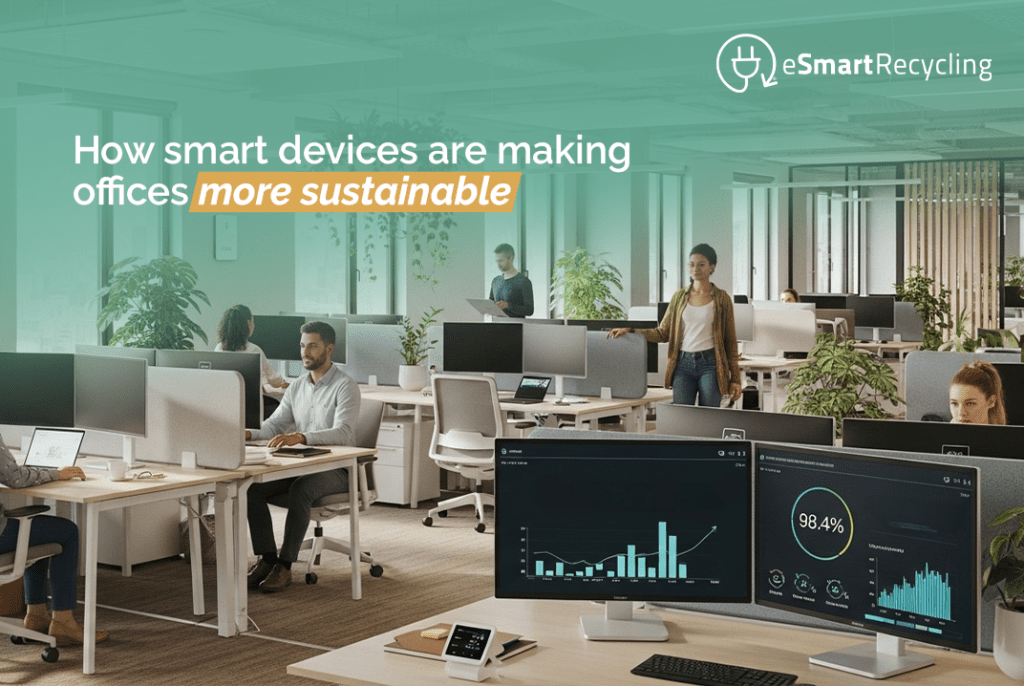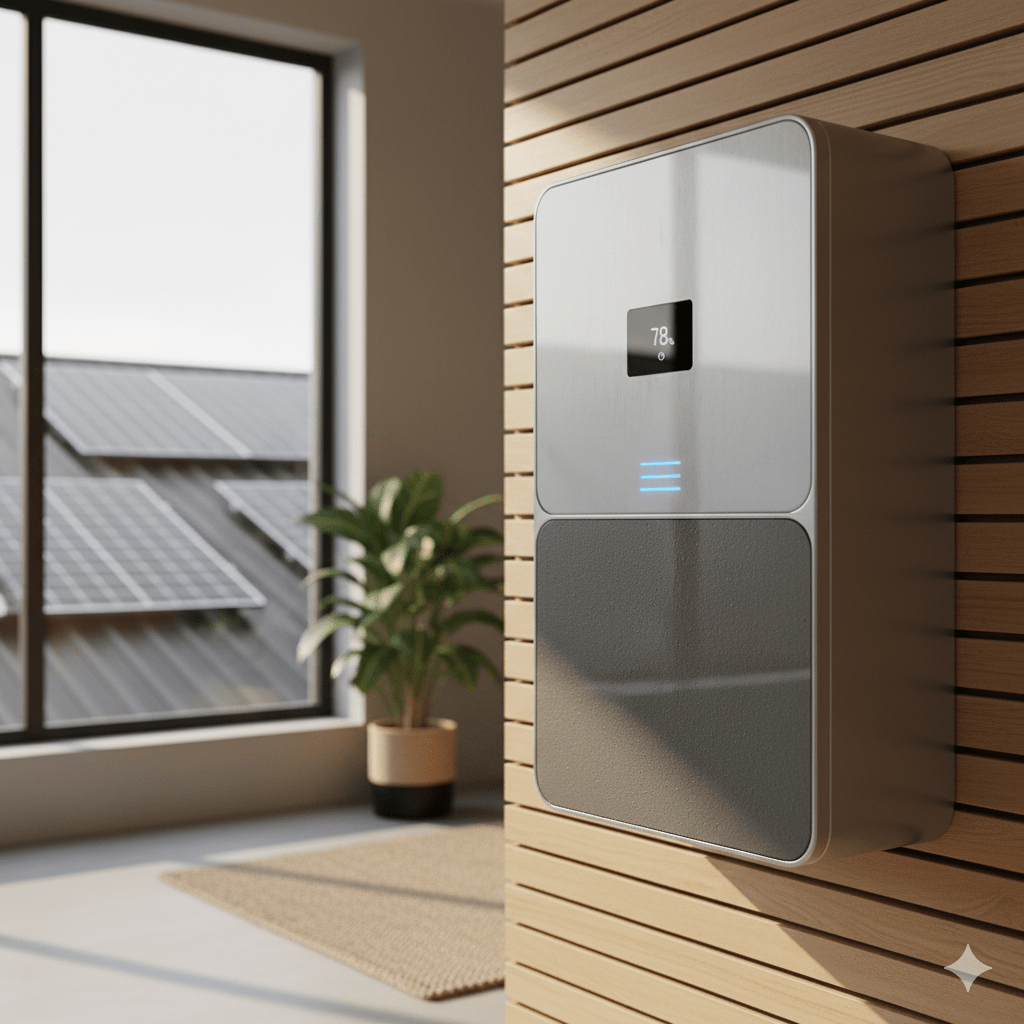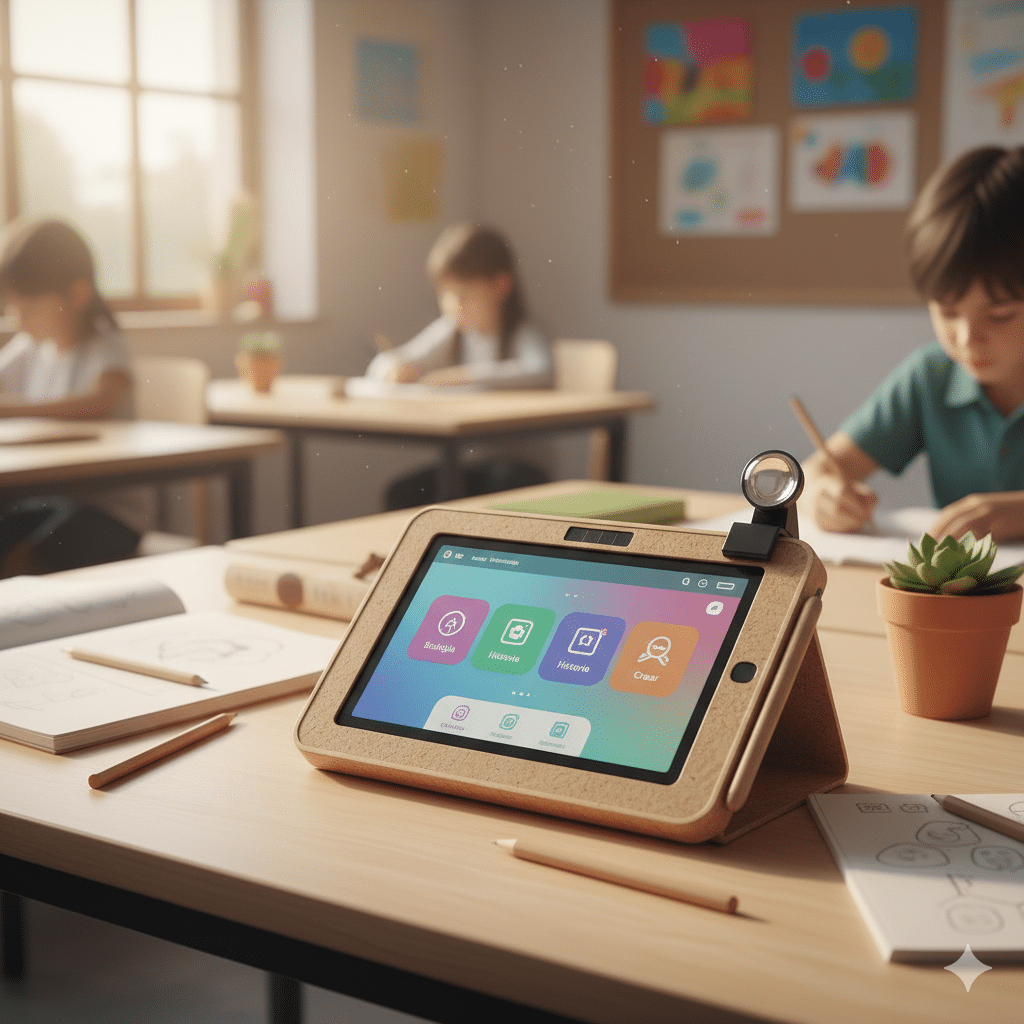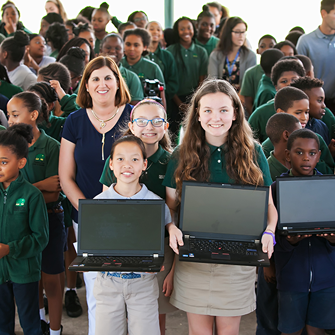
Yes, smart devices can help make offices more sustainable by reducing energy use, waste, and emissions. In this article, we explain how they do it — with real examples — and why it matters for those of us working toward more responsible technology (like we do at eSmart Recycling).
Smart devices include sensors, actuators, connected systems (IoT), automated LED lighting, HVAC control, environmental monitoring stations, and even furniture with sensors.
In short, they detect, measure, and adjust their operation according to what’s happening around them.
These devices can:
Integrating smart lighting and control systems can cut lighting-related electricity use by up to 30% compared to traditional systems.
According to the Association of Energy Engineers, automated buildings can reduce total energy consumption by 10–15%.
Occupancy sensors prevent lighting and HVAC systems from running in empty spaces. They also help extend the lifespan of electrical equipment by switching it off when not in use.
Monitoring CO₂ and humidity helps maintain cleaner air and more stable conditions, which can directly improve employee well-being and focus.
Smart systems collect data about usage patterns, energy consumption, and occupancy levels. With this data, organizations can:
A practical example: Vodafone’s headquarters in Paddington, London, uses IoT sensors to track desk usage, environmental conditions, and electricity consumption, integrating older systems for better control and visibility.
The Edge in Amsterdam is considered one of the most intelligent and sustainable buildings in the world. It has around 28,000 sensors that regulate lighting, air conditioning, and occupancy.
That level of control earned it a BREEAM rating of 98.4%.
Before installing sensors everywhere, conduct an energy audit to identify which systems consume the most and where improvements can be made.
Try a limited pilot — for example, meeting rooms or hallways — to measure results and fine-tune before scaling up.
Use platforms compatible with multiple vendors and IoT standards to avoid vendor lock-in.
Sensors need calibration and updates. Maintaining them ensures accurate data and long-term energy savings.
When devices reach the end of their life, that’s where we come in. At eSmart Recycling, we collect, audit, and recycle technology securely — keeping the cycle consistent and responsible.
How much does it cost?
The cost depends on the size and complexity of the system. Energy and operational savings often offset the initial investment within a few years.
Is it safe?
Yes, it’s safe — as long as best practices are followed: segmented networks, strong authentication, and data encryption.
Can it work in existing offices?
Yes, it can. Sensors and control modules can be added to existing lighting and HVAC systems.
Adopting smart devices isn’t just about cutting consumption or emissions — it’s about creating workspaces that are cleaner, more comfortable, and more conscious. At eSmart Recycling, we believe sustainability starts with everyday choices. A smarter office is one that uses technology to take care of both people and the planet.
Fill out the form below to request your electronics recycling pickup.
We’ll coordinate the schedule logistics and follow up with next steps.
The question is straightforward: what happens when several organizations coordinate to give veterans access to technology and digital training? This recent deployment offered a clear answer. A group of 47 veterans in the Operation: Veteran Connect program received refurbished laptops to stay connected to their routines, families, and educational resources.
Many veterans still face barriers that limit their ability to use technology. A report from the Federal Communications Commission (FCC) noted that 2.2 million veteran households lack fixed broadband, mobile broadband, or both, and that veterans are more likely than non-veterans to cite the absence of a computer or an adequate device as a key reason for not adopting digital services. The report also mentions that many veterans live in rural areas and that older veterans often have fewer digital skills.
This deployment aimed to provide a reliable device ready for use, along with training sessions facilitated by Community Tech House. The goal was to help participants handle everyday tasks, take online courses, or communicate more easily.
At eSmart Recycling, we handled equipment collection, secure data destruction, and device preparation. Our corporate partners — AVISPL and the University of South Florida (USF) — donated the equipment they no longer needed. We then took care of the audit process, secure data wiping, and refurbishment.
After that step, the Digital Education Foundation, together with Seniors in Service and Community Tech House, delivered the laptops and guided the veterans through digital lessons tailored to their needs.
The day of the deployment had a relaxed, friendly tone. Some veterans took their time exploring the keys; others mentioned they hadn’t had a personal device in years, and several talked about wanting to reconnect with family members or continue online learning opportunities.
The recipients were 47 veterans from the Operation: Veteran Connect program. They came with different backgrounds, ages, and reasons for wanting a laptop: staying in touch with loved ones, improving digital skills, managing VA-related tasks, or simply having a device they could depend on.
This result was possible thanks to coordinated work across community groups, companies that recycle their equipment with us, and organizations dedicated to digital education.
Deployments like this one will continue as long as there is collaboration between Seniors in Service, Digital Education Foundation, Community Tech House, our corporate partners, and our team at eSmart Recycling. Each program allows more veterans to use technology they previously did not have access to.
We invite companies interested in recycling their equipment to work with eSmart Recycling. Your participation helps us prepare more laptops and support more people in future deployments.
Artificial intelligence (AI) is changing the way the world deals with electronic waste.
While the planet is producing record amounts of tech trash — 62 million metric tons in 2022, according to the Global E-waste Monitor 2024 — new AI-powered solutions are emerging to classify, reuse, and recycle electronics with unprecedented precision.
But it’s not all as clean as it sounds. The same technology that helps reduce e-waste also consumes enormous amounts of energy, water, and raw materials to exist.
Across recycling plants in Europe and Asia, AI systems can now identify and sort electronic materials with incredible accuracy. Computer-vision cameras recognize metals, plastics, and components in seconds, allowing facilities to separate recoverable parts from true waste.
This increases recovery rates and reduces human error during sorting.
AI is also being used in predictive maintenance — analyzing how devices behave and spotting early signs of wear before they fail. Companies like Dell and HP use algorithms to extend product lifespan and cut down on premature returns. That means fewer devices discarded too soon — and less waste overall.
AI helps manage tech inventories and track which devices can be refurbished, resold, or recycled.
In some countries, it’s being used to map entire e-waste flows and pinpoint regions where formal recycling systems still can’t reach. (weforum.org)
AI’s rise also comes with a significant environmental cost.
In short, AI helps clean part of the problem… while also contributing to it.
The potential is there — if used responsibly. AI could make a real difference by:
The future of e-waste recycling will depend less on algorithms and more on how people choose to use them.
AI can be a powerful ally in reducing e-waste — as long as we remember that progress starts with human choices, not just smart machines.
At eSmart Recycling, we like to look ahead. Our daily work revolves around the present — collecting, recycling, and refurbishing equipment — but we’re also driven by a bigger question: what will technology look like when it finally becomes truly sustainable?
So, we decided to do something different. We asked AI to help us imagine what future devices might look like if they were built to last, repair themselves, and recycle cleanly.
The answers were fascinating — and closer than you might think.
When we say AI “sees” future devices, it’s not science fiction.
Today’s models can already analyze massive data sets on design trends, materials, and energy efficiency to predict what’s coming next.
In the energy sector, for instance, AI is already being used to anticipate demand peaks and optimize power grids, cutting waste and emissions. That same intelligence, applied to hardware, could help create durable, recyclable, and energy-autonomous devices.
During this experiment, our team identified six concepts that AI envisions as possible in the near future. Some are already in development; others still sound like something from a design lab of tomorrow.
A phone designed to last more than a decade.
This merges the spirit of Fairphone with the potential of smart, self-healing materials.

A portable computer covered with flexible photovoltaic film and powered by AI-driven energy management.
A natural step toward circular, low-emission electronics.

An energy-storage system that manages itself.
This kind of system is already being explored for solar grids and smart homes.

A Wi-Fi router designed with environmental awareness in mind.
Routers powered by AI already exist; adding environmental sensors is the logical next step.

A data server that manages its own energy and life cycle.
Companies like Google and Microsoft are already using AI to increase energy efficiency in their data centers.

Designed for school programs and underserved communities.
A tangible example of how sustainability can meet access to education.

Semiconductor manufacturing still demands enormous amounts of water, energy, and rare materials. The future of technology depends on rethinking how we build, use, and reintegrate devices into the economy.
While these six ideas are at different stages of possibility, they share one goal: reducing waste, extending product lifespans, and protecting natural resources.
While AI dreams up tomorrow’s devices, we’re focused on today’s. At eSmart Recycling, we collect used technology from businesses, ensure secure data destruction, recycle responsibly, and refurbish devices that still have life left.
Each device we recover helps close the digital divide and keep e-waste out of landfills. So while AI imagines the next generation of sustainable devices, we keep building sustainability through everyday action.
Recycling old tech isn’t just “getting rid of stuff.” Behind every computer, server, or phone, there are valuable materials, sensitive data, and environmental responsibilities that shouldn’t be ignored.
This guide walks you through the safe, responsible, and trackable way to recycle technology — the same process we follow every day at eSmart Recycling.
The first step is simple but essential: know what you have.
An accurate inventory helps you plan and manage the process correctly.
We do this at every corporate pickup: we audit, label, and track each asset before moving it. That ensures transparency and total control.
Before recycling, every piece of data must be erased — permanently.
At eSmart Recycling, we use certified data destruction methods that meet HIPAA and NIST 800-88 standards.
If you’re preparing devices yourself:
It’s not just about protecting information — it’s about protecting your company’s reputation and compliance.
Many electronics contain hazardous materials such as lead, mercury, or lithium.
Separating batteries, screens, cables, and circuit boards prevents accidents and makes downstream recycling safer.
In our facility, we manually disassemble and classify components to guarantee proper recovery and treatment.
Not all recyclers are the same. Work only with certified providers — ideally those with R2v3 or e-Stewards certification — and verified traceability.
A reliable recycler should offer:
At eSmart Recycling, we go a step further. Part of the recovered value from equipment is used to refurbish and donate computers to children and families who need them. That means your recycling effort also supports digital inclusion.
Once your materials are ready:
We provide both certificates, along with a full traceability report and an environmental summary.
We also offer social and environmental impact reports so companies can communicate their results transparently.
Safe tech recycling shouldn’t be a one-time project.
Set up regular collections — annually or semi-annually — and include them in your sustainability reporting.
Every year, thousands of companies in the U.S. refresh their technology. When that equipment is handled properly, it prevents pollution, reduces emissions, and helps close the digital divide.
At eSmart Recycling, that’s exactly what we do.
We collect, audit, refurbish, and recycle devices — ensuring data security, environmental safety, and social good. Refurbished computers from our process reach schools and communities that otherwise wouldn’t have access to technology.
What starts as a technical process ends up creating human change.
If your company wants to recycle safely, transparently, and with purpose, this is the way to do it.
If we want to take sustainability seriously, technology is a great place to start. Every device we use — from phones to servers — consumes resources, energy, and materials. But it also gives us a chance to use them more wisely.
Here are five practical things you can do at home or in your company to help the planet and join the spirit of World Sustainability Day 2025.
Rule number one: don’t replace, repair. Many laptops and desktops can work perfectly fine with a little upgrade — an extra stick of RAM, an SSD drive, or a new battery. Even basic maintenance like cleaning fans, can extend their life by years.
Every year, the world generates over 62 million tons of e-waste, yet only 17.4% is properly collected and recycled. Keeping your devices running longer helps reduce your piece of that growing problem.
When a replacement is really needed, go for devices with ENERGY STAR or EPEAT labels — they’re designed to use less power and last longer.
And don’t forget the small stuff:
Simple, everyday actions like these can save huge amounts of energy when multiplied across dozens of devices.
Many electronics still draw “phantom” energy even when they’re off. Smart power strips detect when a device isn’t being used and cut power to that outlet automatically.
They’re great for home offices, meeting rooms, or printing areas — a small investment that pays off quickly.
Sustainability also lives in the digital world. Try these small shifts:
Data centers consume massive amounts of electricity, and these habits help cut that footprint.
When a device truly reaches the end of its life, don’t throw it away. Partner with certified recyclers that guarantee secure data destruction and proper material recovery.
In 2025, North America’s e-waste recycling market is valued at over $33 billion, and it keeps growing worldwide.
At eSmart Recycling, we handle this process every day — collecting, auditing, refurbishing, and recycling technology. Every device that gets a second life helps reduce waste and connects more people to digital access.
If everyone adopted just two or three of these actions, the difference would be massive. Let’s make tech sustainability part of everyday life — not just a buzzword.
Managing electronic waste responsibly isn’t just about protecting the environment — it’s a solid, long-term business move. Here’s why, backed by real data, real examples, and the way we see it every day at eSmart Recycling.
When a company takes electronic waste management seriously — from computers and servers to printers and cables — it benefits in several ways:
Let’s break down why this matters.
The global electronic waste recycling market is projected to expand from around USD 25 billion today to over USD 130 billion by 2033, according to GlobeNewswire.
In the U.S. alone, the sector is valued at USD 24.7 billion in 2024 and could reach USD 45 billion by 2032, based on PS Market Research.
That growth isn’t just a headline — it reflects real business opportunities for organizations that collect, refurbish, or recycle electronics in a safe, compliant way.
Electronic devices contain valuable metals and minerals. In fact, one ton of printed circuit boards can hold more gold than a ton of mined ore, according to Iron Mountain.
When metal prices rise, so do profit margins — and the more precise your recovery process, the greater the yield.
For companies disposing of large volumes of tech equipment, traditional disposal methods are expensive — transportation, hazardous waste management, and processing costs add up fast.
Recycling partnerships can reduce those costs and even turn them into revenue streams. As volume increases and logistics improve, the cost per unit drops, creating room for scalability.
Well-managed e-waste recycling businesses can reach operating margins of 10% to 20%, depending on volume, location, and commodity prices.
E-waste recycling comes with challenges:
To manage these risks:
At eSmart Recycling, we operate in the U.S. under the R2v3 certification, the world’s most recognized standard for responsible electronics recycling.
This certification ensures every step — from collection to secure data destruction and material recovery — meets rigorous environmental, safety, and data protection standards.
By combining technical compliance, social value, and financial sustainability, we maintain a circular model that benefits both the planet and our partners.
Managing electronic waste properly isn’t just about avoiding fines or meeting regulations. It’s about showing responsibility toward something bigger — our shared resources, our customers’ trust, and the communities around us.
Every properly recycled device tells a different story: less pollution, more material recovery, and new opportunities for others to access technology.
At eSmart Recycling, we see it every day. And yes, when it’s done with purpose, recycling technology is good business.







If you want to know more about the different programs, partners, and overall cool things happening in the eSmart world, share your email with us, and Join the E-Revolution.